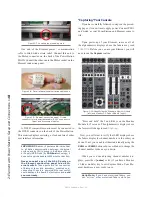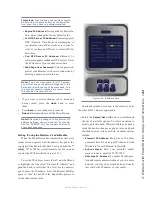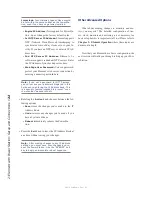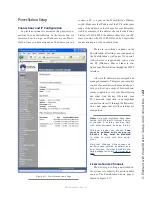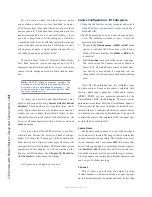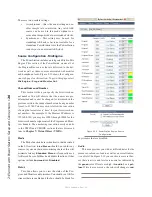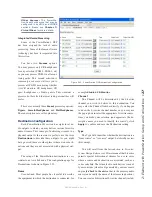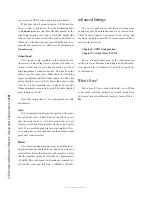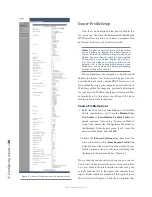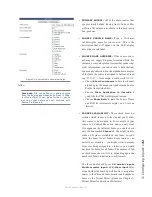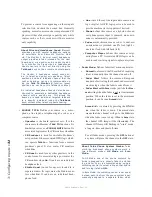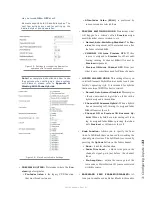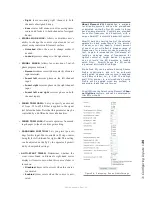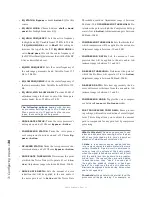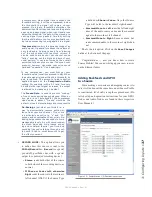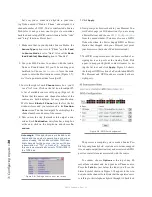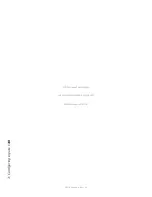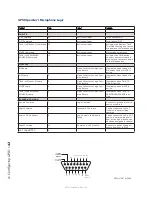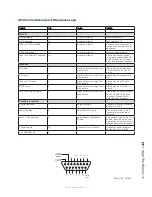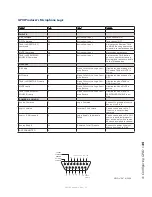
3: C
on
fig
uri
ng I
np
ut
s •
32
©2016 Axia Audio- Rev 1.8.1
To prevent a source from appearing on these inputs’
selection lists, uncheck the desired box. Generally
speaking, normal sources such as computers and CD
players will have fader assign capability only while
sources such as off-air receivers will have monitor-
only capability.
About Mics and Headphone Feeds: Element
provides you with several headphone options,
all selectable from Element’s Monitor Mod-
ule. The Monitor 1 (control room) headphone
output provides a feed intended for the Host
(board-op’s) mic position and includes the abil-
ity to monitor the Preview bus in headphones.
Guests can talk to the host directly using the
Talkback keys on their remote control panels.
The Monitor 2 headphone output sends au-
dio to talent and guest mic positions. Talent
positions include a talkback channel that the
host or board op can use to communicate us-
ing the Talk To Monitor 2 function (guest
positions do not have this Talkback channel).
An individual headphone feed can also be con-
structed to associate a dedicated headphone
channel with a specific mic. This allows the
board op to send individual, targeted talkback
to a specific individual (using the Talkback
keys) without other talent or guests hearing.
•
SOURCE TYPE:
Define your source as a micro-
phone, a line input, a telephone input, a codec or a
computer source.
»
Operator
is the board operator’s mic. It is the
source mic for Element’s
TALK TO
functions. Its
On
button serves as a
COUGH/MUTE
button. Its
associated logic mutes the CR monitors when
On
.
»
CR Producer
is used for in-studio Producer’s
mic positions. It has associated GPIO logic which
can operate
Talk to...
functions from a remote
producer’s panel. It also mutes CR monitors
when
On.
»
CR Guest
is used for any other guest mic in the
control room. Its associated logic port mutes the
CR monitors when
On
. It can have an individual
headphone feed.
»
Studio Guest
is used for any mic located in a
separate studio. Its logic mutes the Studio moni-
tors when
On
. It can have an individual head-
phone feed.
»
Line
is used for any line input audio source, ana-
log or digital. A GPIO logic port can be used to
provide machine start/stop pulses if desired.
»
Phone
defines this source as a hybrid or broad-
cast phone system input. A summed mono mix-
minus is automatically provided.
»
Codec
marks this source as a codec. A dual-mo-
no mix-minus is provided; one PA feed (right) +
one talent feed with talkback (left).
»
Computer Player
defines this source as origi-
nating from a PC. Associated GPIO logic can be
used to send start/stop signals to a playout system.
•
Fader Mode:
Defines fader start actions and states:
»
Normal
conforms to the US method of requiring
talent to manually turn the channel on and off.
»
Fader Start
follows the common European
standard of activating the channel and associated
machine logic when the fader is raised from
∞
.
»
Fader Start with Arm
works just like the
Nor-
mal
setting when the fader is not set to minimum
position. When the fader is set to the minimum
position, it can be in an
Armed
state.
Armed
state is entered by pressing the ON But-
ton when the fader is down. The armed state
means that the channel will go to the
ON
state
when the fader is moved up. When in
Arm
state,
the channel OFF lamp will be illuminated. The
channel ON lamp will flashing in “wink” mode -
a long on-time and short off-time.
For all fader modes, pressing the
OFF
button at
any time will place the channel in the
OFF
state.
About Telos Phone System Modes: Telos
multi-line broadcast phone systems work in
two different modes: US Mode and Euro
Mode.
In US Mode, one of the phone system’s hy-
brids is assigned to a console faders, and tak-
ing a caller to air is accomplished by using a
switching control to select a line on that hybrid
and turning its fader ON.
In Euro Mode, the switching control is not used;
instead, each line from the phone system is per-
manently assigned to a separate fader, which

